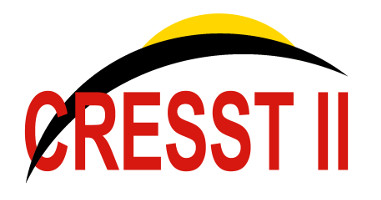News from the Department (2025)

May 2025
- CMNS continues to feature alums making an impact. This week Kayhan Gultekin, an astronomy alum (PhD 2006) who is now studying supermassive black holes, their extreme environments and how they affect their host galaxies. In 2023, he was part of the NANOGrav research team that detected and analyzed the first evidence of gravitational waves passing through the Milky Way-signals likely launched into space by supermassive black holes.
- And first year grad student Shaniya Jarrett starred in Big Think's May 10th podcast Starts With A Bang podcast #117 - Gravitational waves and the Universe.
- Marvin Jones II and his ASTR230 class was the topic of a great story titled Take This Class! Sci-Fi vs. Sci Fact in MarylandToday last week.
- Matt Nixon and former undergrad Yoav Rotman co-led a paper titled The Challenges of Detecting Gases in Exoplanet Atmospheres that pushes back on the recent claims of biosignatures in the atmosphere of the sub-Neptune K2-18b, noting that recent claims of a potential biosignature detection vanish when the considered model space is expanded. Matt has also appeared in New York Times and Science stories covering the atmosphere of K2-18b.
- Brian Davenport is the lead author on a paper titled TOI-421 b: A Hot Sub-Neptune with a Haze-free, Low Mean Molecular Weight Atmosphere with co-authors including Eliza Kempton (PI of the Cycle 1 JWST program), Matt Nixon, Jegug Ih, Drake Deming, Matej Malik, and Guangwei Fu. The paper has NASA and CMNS press releases (also picked up by MarylandToday) about the study that offers a rare glimpse into a sub-Neptune's atmosphere. Using the James Webb Space Telescope, researchers got a clear view of exoplanet TOI-421b, enabling them to detect water vapor in its atmosphere.
- And in a soon-to-be appeared by a Department member by proxy, in early November this year Tim Livengood plans to attend the induction ceremony in LA for his mother-in-law entering the Rock and Roll Hall of Fame -- at age 90! Carol Kaye is the most recorded electric bass player ever (so far), so if you have heard music in the US in the last half-century, you have heard her at some point. She has probably also given lessons to some of your favorite guitar heroes.
- CMNS science writer Leslie Miller tracked down and wrote a great story about Astronomy alum (Ph.D. 2000) Sven Geier, reporting on his career building instruments at JPL, where he is now the technical group lead for imaging spectroscopy.
- Haley Beltz' paper with Willow Houck and Tad Komacek, among others, is now published in ApJ. The Effects of Kinematic MHD on the Atmospheric Circulation of Eccentric Hot Jupiters explores interactions between ions and the planet's magnetic field that drive temperature extremes in the atmosphere of TOI-150b, an eccentric (e = 0.26), Jupiter-mass (~1.75MJup) planet whose equilibrium temperature varies from 1300 to 1700 K.
April 2025
- Lori Fegea led a paper with co-author Jessica Sunshine titled Unraveling the Water Sources in Comet 103P/Hartley 2 from Deep Impact Flyby Observations that has now appeared in The Planetary Science Journal. The paper discusses the water sources in comet 103P/Hartley 2's coma from a thorough analysis of Deep Impact spectral data. We determined, among other things, that during the 2010 perihelion 25%-40% of the water in the coma was expelled from the hyperactive comet's nucleus as ice rather than vapor.
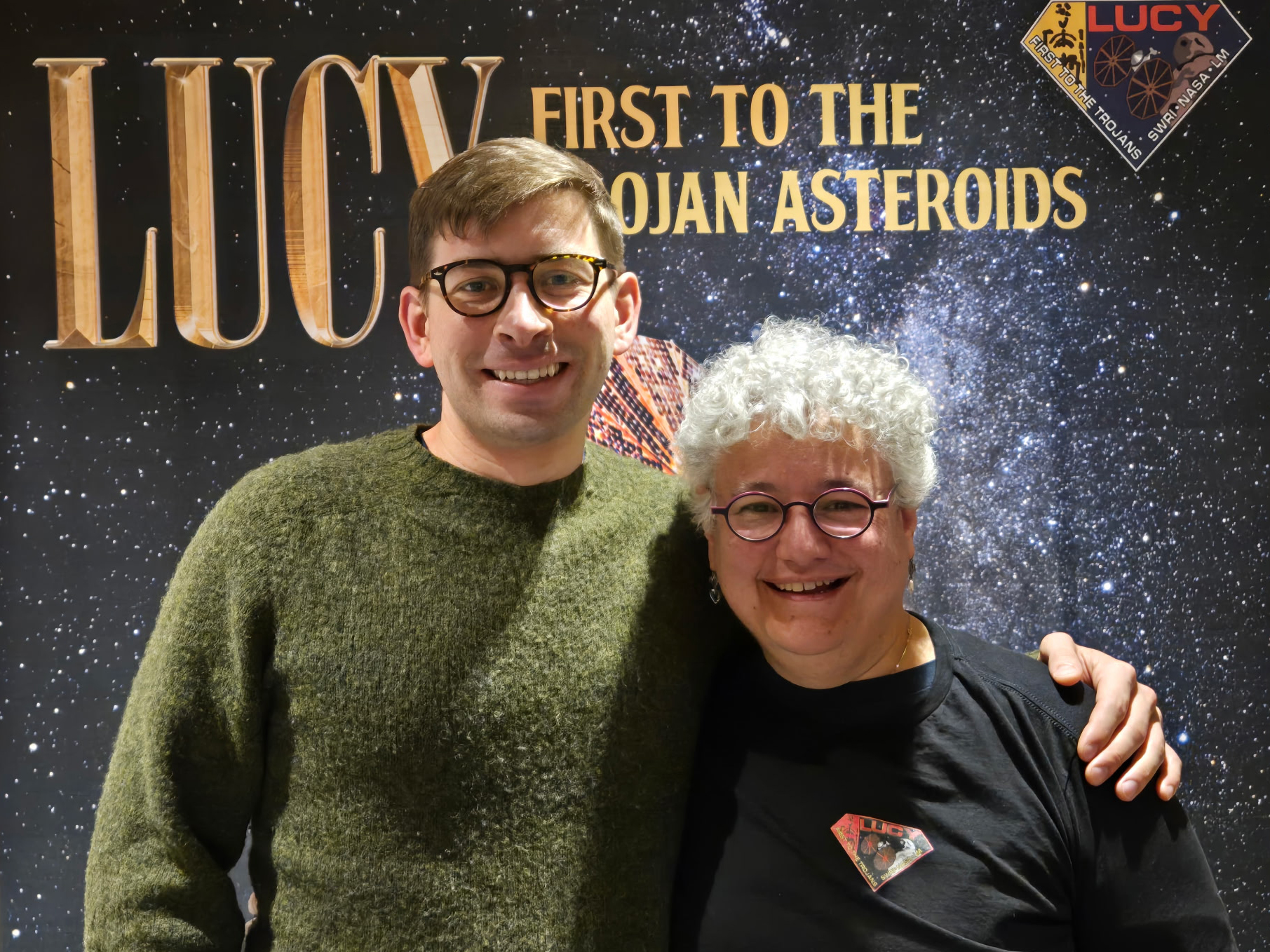 Jessica Sunshine and former grad student Harrison Agrusa joined the Lucy team's gathering to get first returns from the spacecraft's imaging of asteroid Donaldjohanson on April 20 as it zoomed by, closing to about 600 miles (960 km). Donaldjohanson is too small to be spherical, and as expected, is elongated and lumpy. This flyby, like Lucy's look at Dinkinesh, is in many ways a warmup for Lucy's first main targets among the Jupiter Trojan asteroids starting in summer 2027.
Jessica Sunshine and former grad student Harrison Agrusa joined the Lucy team's gathering to get first returns from the spacecraft's imaging of asteroid Donaldjohanson on April 20 as it zoomed by, closing to about 600 miles (960 km). Donaldjohanson is too small to be spherical, and as expected, is elongated and lumpy. This flyby, like Lucy's look at Dinkinesh, is in many ways a warmup for Lucy's first main targets among the Jupiter Trojan asteroids starting in summer 2027.
- Maryland Day! Many thanks to everyone who volunteered to support the Department of Astronomy tables at Maryland Day, with special thanks to Elizabeth Warner for organizing us all! The weather was variable, with light showers in the morning changing to broken clouds in the afternoon, and then thunderstorm threats that led the campus to close everything down just before 3:30, a little early. But, as always, big crowds and plenty of fascinated and excited visitors to our and all the other displays. Thanks again!
- Andy Harris led "SOFIA/upGREAT imaging spectroscopy of the [C II] 158 um fine structure line toward the Sgr A region in the Galactic center", now accepted by ApJ and on arXiv. Among other results, they propose that the concentric arcs comprising the Arched Filaments emitting thermal radiation trace UV generated in shocks as supernova blast waves strike the surface of a large molecular cloud.
- Vanessa López-Barquero led a paper titled "Chaotic Behavior of Trapped Cosmic Rays," now published in ApJ. The paper, a collaboration with one of Vanessa's IceCube colleagues at UW-Madison, reports on their development of a new method to characterize cosmic rays' chaotic behavior in arrival anisotropies. They evaluate particle trajectories in an axial-symmetric magnetic bottle to highlight mirroring effects, using time-dependent magnetic perturbations to study how temporal variations affect this chaotic behavior.
- Melissa Hayes-Gehrke led the publication of "Lightcurves from Three Mutual Events of Trojan Binary 617 Patroclus in October 2024" in The Minor Planet Bulletin, a summary of work carried out by undergraduate student coauthors Oliver O'Brien, Natalie Haugen, Isabella Sanford, Jorge Argueta, Nardos Mekonnen, Sarah Blaufuss, Qinyan Lu, Joseph Kleinman, and Breza Bodie. They present three raw lightcurves of Trojan binary 617 Patroclus on 2024 October 2, 6, and 21 during mutual events of the binary system. Oliver O'Brien talks about the careful work needed to set the stage for the thrill of seeing one element of a binary minor planet eclipse the other (a mutual event) in a very nice CMNS press release. The release was also featured in MarylandToday. A great project, please congratulate the collaborators!
- Congratulations to Gabe Grell, who was selected to be the a student speaker at the CMNS grad commencement ceremony. Here again the distinction comes from Gabe's contributions and accomplishments as described in the CMNS announcement.
- Recognizing Chris Reynolds' many contributions, the University has awarded him the title of Distinguished University Professor. This is the highest title at the University, earned by only a small fraction of the professorial faculty. Within our department, Mike A'Hearn was the only previous recipient. Congratulations Chris!
- Asteroid 2024 YR4 (you may remember it as: it might hit us...it's looking more likely...no, never mind) stays in the news with a NASA press release featuring Gerbs Bauer.
- Speaking of student research at the observatory, Raquel Smith, one of Elizabeth Warner's last students in the College Park Scholars Science Discovery and the Universe program, observed several asteroid occultations as part of her sophomore capstone project during Spring 2023. Two of the observations resulted in the discovery of double stars. Elizabeth and Raquel along with students from UVA have written up and published the results in the Journal of Double Star Observations.
- MarylandToday had a very good writeup of Astronomy's 1st STudent Initiated Course (STIC) on astrophotography that undergraduate astronomy majors Chaitanya Garg and Matthew Prem co-teach with supervision by Elizabeth Warner.
- MarylandToday picked up CMNS science writer Emily Nunez' cheery interview with Alyssa Pagan, our former undergraduate student, staff member, and present wizard of JWST imaging. Cool images too, needless to say. Alyssa always knew that she wanted to combine her passions for art and astronomy, and certainly did!
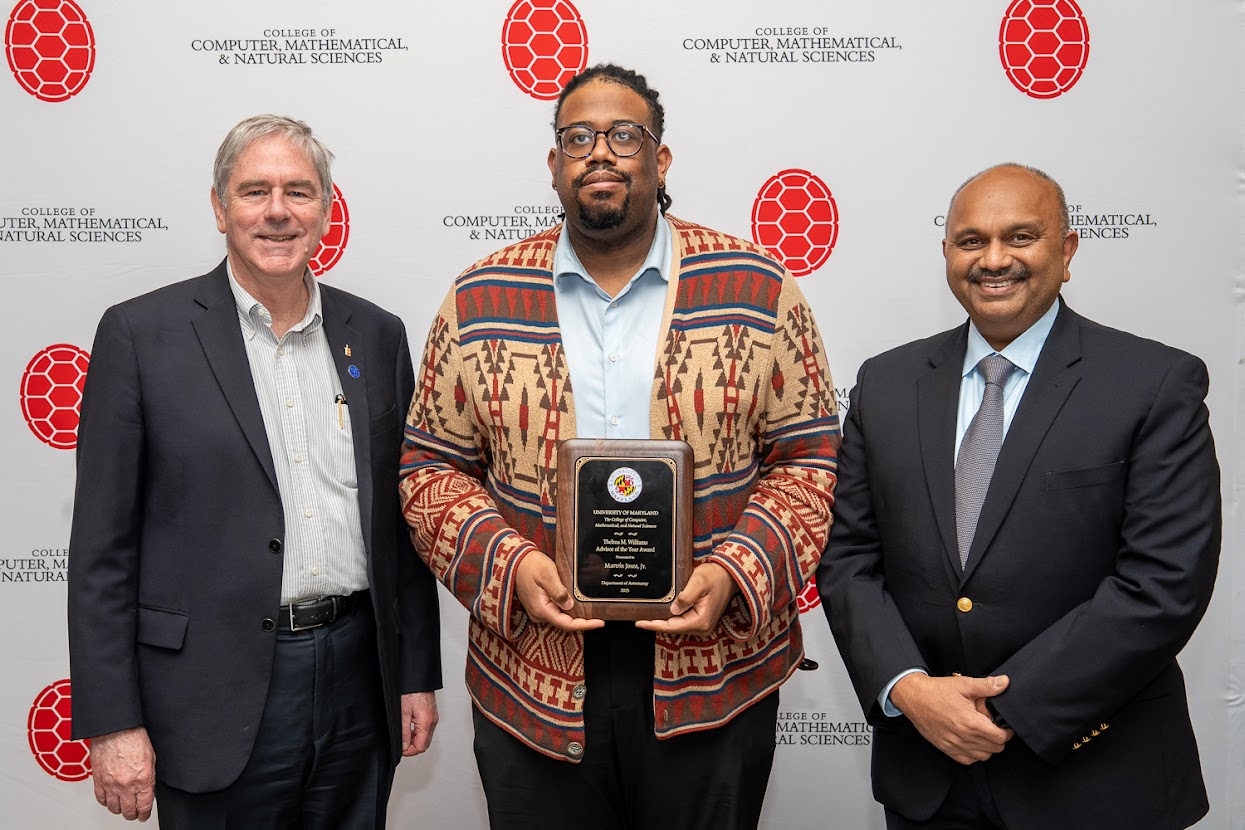 Congratulations to Marvin Jones, Jr., this year's recipient of the CMNS Thelma M. Williams Advisor of the Year Award! Marvin is at the center of the photo, flanked by Dean Varshney to the right and the usual photo-bomber (Dr. Harris) to the left. This award carries special significance because the nominations must be from undergraduate students. Those of us beyond our undergraduate years would have nominated him too, given the chance. Please congratulate Marvin when you see him, if you can find a space between the undergraduates surrounding him.
Congratulations to Marvin Jones, Jr., this year's recipient of the CMNS Thelma M. Williams Advisor of the Year Award! Marvin is at the center of the photo, flanked by Dean Varshney to the right and the usual photo-bomber (Dr. Harris) to the left. This award carries special significance because the nominations must be from undergraduate students. Those of us beyond our undergraduate years would have nominated him too, given the chance. Please congratulate Marvin when you see him, if you can find a space between the undergraduates surrounding him.
- Congratulations to Matt Nixon, who has received a prestigious 51 Pegasi b fellowship from the Heising-Simons Foundation. You can read that he will take his fellowship to Arizona State University in the Heising-Simons Foundation press release.
March 2025
- Mia Bovill appears in "A Century Ago, Pioneering Astrophysicist Cecilia Payne-Gaposchkin Showed Us What Stars Are Made Of", published in Smithsonian Magazine detailing the life of Cecilia Payne-Gaposchkin.
- The Minor Planet Bulletin has published a paper by nine Astronomy majors (Oliver O'Brien, Natalie Haugen, Isabella Sanford, Jorge Argueta, Nardos Mekonnen, Sarah Blaufuss, Qinyan Lu, Joseph Kleinman, and Bodie Breza) that details observations and lightcurve analysis made of three mutual events of the Trojan asteroid binary 617 Patroclus in October 2024. The students were responding to the Lucy mission's call for observations of the binary during a recent opposition of the asteroid so that additional lightcurves of the event could be used to more precisely determine the sizes, shapes, and orbit of the binary in preparation for the Lucy fly-by in 2033. The students observed the asteroid remotely using telescopes in Australia; funding was provided by Dr. Richard Binzel (MIT) via the Lucy mission. CMNS picked up the story and also published an article "Undergraduate Astronomer Observes Rare Eclipsing Event Between Faraway Asteroids".
- Gerbs Bauer reflected on the increasing and then decreasing probability of Earth being hit by a space rock in one of last week's MarylandToday.
February 2025
- Former grad student Carrie Holt (PhD 2023, now at Las Cumbres Observatory) chats on the AAS YouTube channel about her paper "Brightness Behavior of Distant Oort Cloud Comets and where we can go from here given the published article. Co-authors include alum Matthew Knight, PhD 2008, and faculty Michael Kelley, Quanzhi Ye, and Derek Richardson.
- Congratulations to postdoc Sean Terry, the lead author on A Candidate High-velocity Exoplanet System in the Galactic Bulge that includes co-authors David Bennett and Arpana Bhattacharya, about a low-mass star dragging its planetary system through space at about 540 kilometers per second. The news made it to Thursday's MarylandToday, with a vague writing credit that may well include some of our Department members!
- Dennis Wellnitz is a member of the team hoping to get a new and improved laser retroflector on the Moon. MarylandToday had a good story about the project and why it will be a step forward. Laser ranging to the Moon started at UMD.
- The NY Times picked up the story about asteroid 2024 YR4, which rather suddenly shifted from one list to another, emerging as a possible future Earth impactor.. This kept the Small Bodies Node busy getting the news out. It's about 50m in size, which would be very bad news if it hit a city. If history is a guide, though, the probability of an impact will decrease from the current value 1% as the orbit is refined.
- Very cool: not only do the samples OSIRIS-REX returned from Bennu have amino acids, but they have a near-equal mix of handedness (handedness is a big deal in working out the origin of life on Earth). The paper, Abundant ammonia and nitrogen-rich soluble organic matter in samples from asteroid (101955) Bennu includes several co-authors who are CRESST faculty.
- And coming up Monday, Feb. 10, Zuzanna Kocjan will be joining a raft of ambassadors and other diplomatic luminaries on the "Breaking the Ceiling!" panel at the International Week of Women and Girls in Science: Global Perspectives in Science Diplomacy event organized by the Johns Hopkins Science Diplomacy Hub in collaboration with the Embassy of Finland, Embassy of Norway, Embassy of Poland, and Embassy of the United Arab Emirates. Way to go, Zuzanna!
- Cold fronts in galaxy clusters I: A case for the large-scale global eigen modes in unmagnetized and weakly magnetized cluster core, a paper by P. Pal Choudhury & C. S. Reynolds, is now in press with MNRAS. Congratulations, Chris!
January 2025
- Gerry Share led a paper titled Solar Gamma-Ray Evidence for a Distinct Population of > 1 MeV Flare-Accelerated Electrons has been accepted for publication in ApJ. They are able to separate power-law and modified power-law energy components to distinguish gamma-ray production in the corona and at solar flare footpoints. Congratulations, Gerry! (He'll also be giving a seminar 7 Apr.)
- Astronomy/Geology Professor Jessica Sunshine is now another step closer to investigating the Gruithuisen Domes, one of the most enigmatic formations on the moon. NASA recently selected a commercial partner to deliver the Lunar Vulkan Imaging and Spectroscopy Explorer (Lunar-VISE) mission payload to the Domes. The project aims to investigate the Domes' inexplicable origins-and whether the moon's surface contains potential resources for future lunar exploration. Read more in the CMNS release.
- Congratulations to Johnny Seebeck for his Graduate Honorable Mention in the Chambliss Astronomy Achievement Student Awards! More to come.
- Given the location, no surprise, but there were familiar faces from the Department everywhere at AAS last week! Starting with the Grad student and REU fair, where lines of interested people, including quite a number of grad school applicants, kept Keaton, Keyi, Kylie, Marshall, Charles, Lee, Chris, and me hopping. (I hope I didn't forget anyone, let me know if so.)
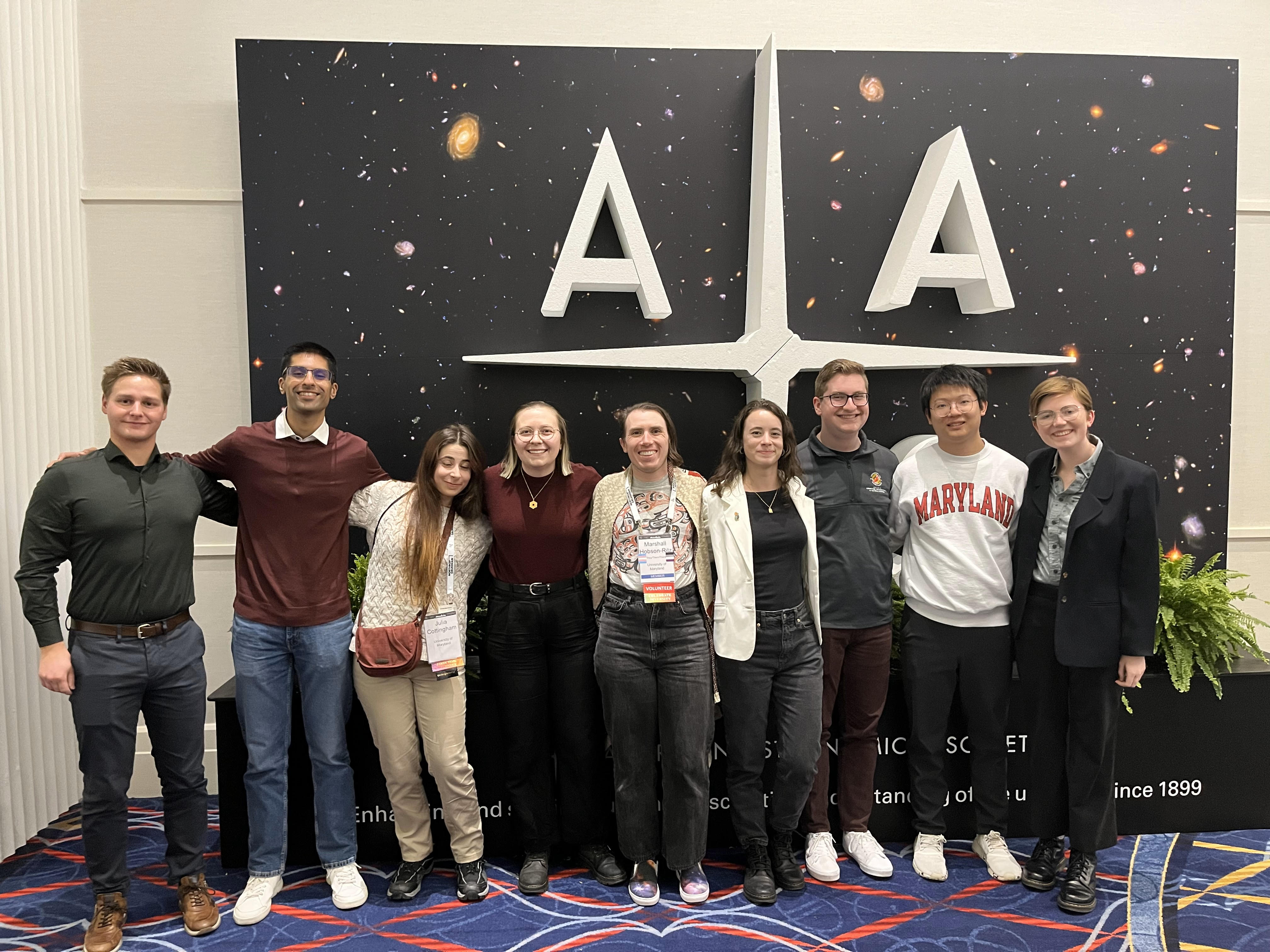 Kicking off on Monday, plenty of talks. Next time we need to make a list in advance and distribute it -- I could find many more with a desktop than with the mobile version of the program, so I missed a lot of our talks.
Kicking off on Monday, plenty of talks. Next time we need to make a list in advance and distribute it -- I could find many more with a desktop than with the mobile version of the program, so I missed a lot of our talks.
Posters galore, too, of course, all in the electronic iPoster format. These got mixed reviews. Not only the temptation, but the practice, was to have much of the text (and sometimes way, way, way, too much text).expand on a click, so it wasn't easy to read the poster without interacting with it. That effectively limited the number of people who could see a poster at any one time, unless they were a group. On the plus side, one could show animations and details well beyond the scope of a paper poster.
Speaking of posters, congratulations go to Johnny Seebeck for his Graduate Honorable Mention in the Chambliss Astronomy Achievement Student Awards! More on this when the AAS updates its web page, but congratulate Johnny now!
The exhibit and poster area was a great place for bumping into Maryland colleagues, including quite a number of our undergrad students in addition to our grad students, faculty, and alums. Not to mention colleagues we know from other institutions, NASA, NSF, Lowell, NRAO, AUI, Springer, and more.
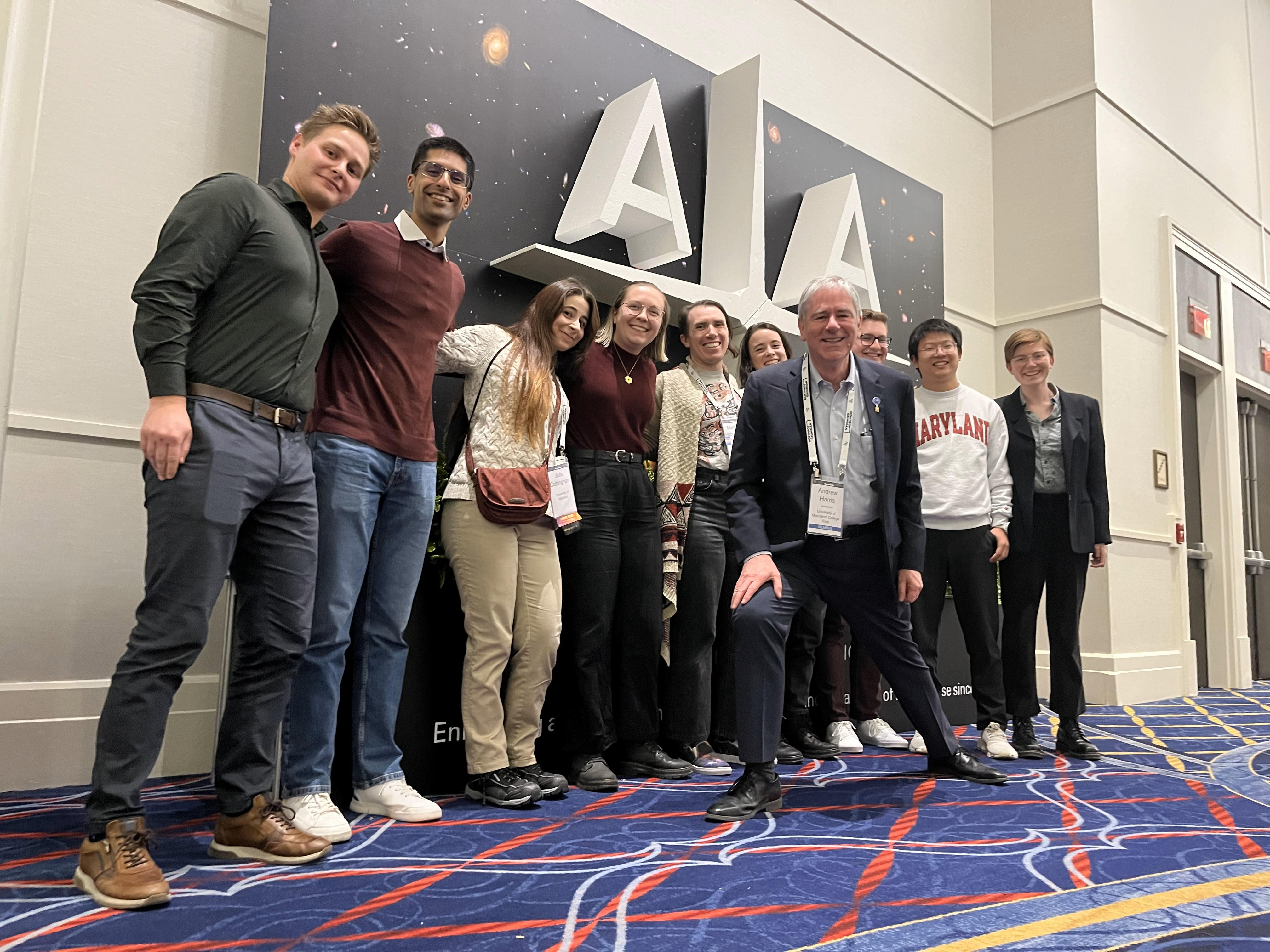 AXIS and PRIMA got a lot of attention, and not only at the NASA Town Hall. AXIS had a booth, generally quite crowded, and PRIMA was represented with a table in the IPAC. Both had well-attended splinter sessions, and Alex Pope devoted her plenary talk to the importance of the far-IR in support of PRIMA. Several PRIMA talks emphasized possible synergies between the two missions.
AXIS and PRIMA got a lot of attention, and not only at the NASA Town Hall. AXIS had a booth, generally quite crowded, and PRIMA was represented with a table in the IPAC. Both had well-attended splinter sessions, and Alex Pope devoted her plenary talk to the importance of the far-IR in support of PRIMA. Several PRIMA talks emphasized possible synergies between the two missions.
And drama! The spacewalk to fix the light leaks in the NICER instrument took place on Thursday. Elizabeth Ferrara was completely wrapped up in getting things set up for the astronauts, and had to leave the information table to Isiah while she supported the repair on Thursday. The worst of the leaks came from something (probably stray ice fragments) scraping off a metal film blocking layer in front of the detectors, and the light blinded them during ISSS days. So, nighttime only observing at X-rays, a bit novel. Elizabeth and Isiah had a nifty set of demonstrations to show NICER and the repair equipment. By Thursday noon Isiah was the center of attention, with quite a crowd at his table. Whew!
I'm missing many highlights, I'm sure (but do send them in for a subsequent update), but I'll close with one very popular feature of the meeting, especially but not exclusively for the younger crowd -- a photo backdrop. Even with only a fraction of our students collecting at the right time, Maryland took advantage of it, of course!

 Jessica Sunshine and former grad student Harrison Agrusa joined the Lucy team's gathering to get first returns from the spacecraft's imaging of asteroid Donaldjohanson on April 20 as it zoomed by, closing to about 600 miles (960 km). Donaldjohanson is too small to be spherical, and as expected, is elongated and lumpy. This flyby, like Lucy's look at Dinkinesh, is in many ways a warmup for Lucy's first main targets among the Jupiter Trojan asteroids starting in summer 2027.
Jessica Sunshine and former grad student Harrison Agrusa joined the Lucy team's gathering to get first returns from the spacecraft's imaging of asteroid Donaldjohanson on April 20 as it zoomed by, closing to about 600 miles (960 km). Donaldjohanson is too small to be spherical, and as expected, is elongated and lumpy. This flyby, like Lucy's look at Dinkinesh, is in many ways a warmup for Lucy's first main targets among the Jupiter Trojan asteroids starting in summer 2027. Congratulations to Marvin Jones, Jr., this year's recipient of the CMNS Thelma M. Williams Advisor of the Year Award! Marvin is at the center of the photo, flanked by Dean Varshney to the right and the usual photo-bomber (Dr. Harris) to the left. This award carries special significance because the nominations must be from undergraduate students. Those of us beyond our undergraduate years would have nominated him too, given the chance. Please congratulate Marvin when you see him, if you can find a space between the undergraduates surrounding him.
Congratulations to Marvin Jones, Jr., this year's recipient of the CMNS Thelma M. Williams Advisor of the Year Award! Marvin is at the center of the photo, flanked by Dean Varshney to the right and the usual photo-bomber (Dr. Harris) to the left. This award carries special significance because the nominations must be from undergraduate students. Those of us beyond our undergraduate years would have nominated him too, given the chance. Please congratulate Marvin when you see him, if you can find a space between the undergraduates surrounding him. Kicking off on Monday, plenty of talks. Next time we need to make a list in advance and distribute it -- I could find many more with a desktop than with the mobile version of the program, so I missed a lot of our talks.
Kicking off on Monday, plenty of talks. Next time we need to make a list in advance and distribute it -- I could find many more with a desktop than with the mobile version of the program, so I missed a lot of our talks.
 AXIS and PRIMA got a lot of attention, and not only at the NASA Town Hall. AXIS had a booth, generally quite crowded, and PRIMA was represented with a table in the IPAC. Both had well-attended splinter sessions, and Alex Pope devoted her plenary talk to the importance of the far-IR in support of PRIMA. Several PRIMA talks emphasized possible synergies between the two missions.
AXIS and PRIMA got a lot of attention, and not only at the NASA Town Hall. AXIS had a booth, generally quite crowded, and PRIMA was represented with a table in the IPAC. Both had well-attended splinter sessions, and Alex Pope devoted her plenary talk to the importance of the far-IR in support of PRIMA. Several PRIMA talks emphasized possible synergies between the two missions.

